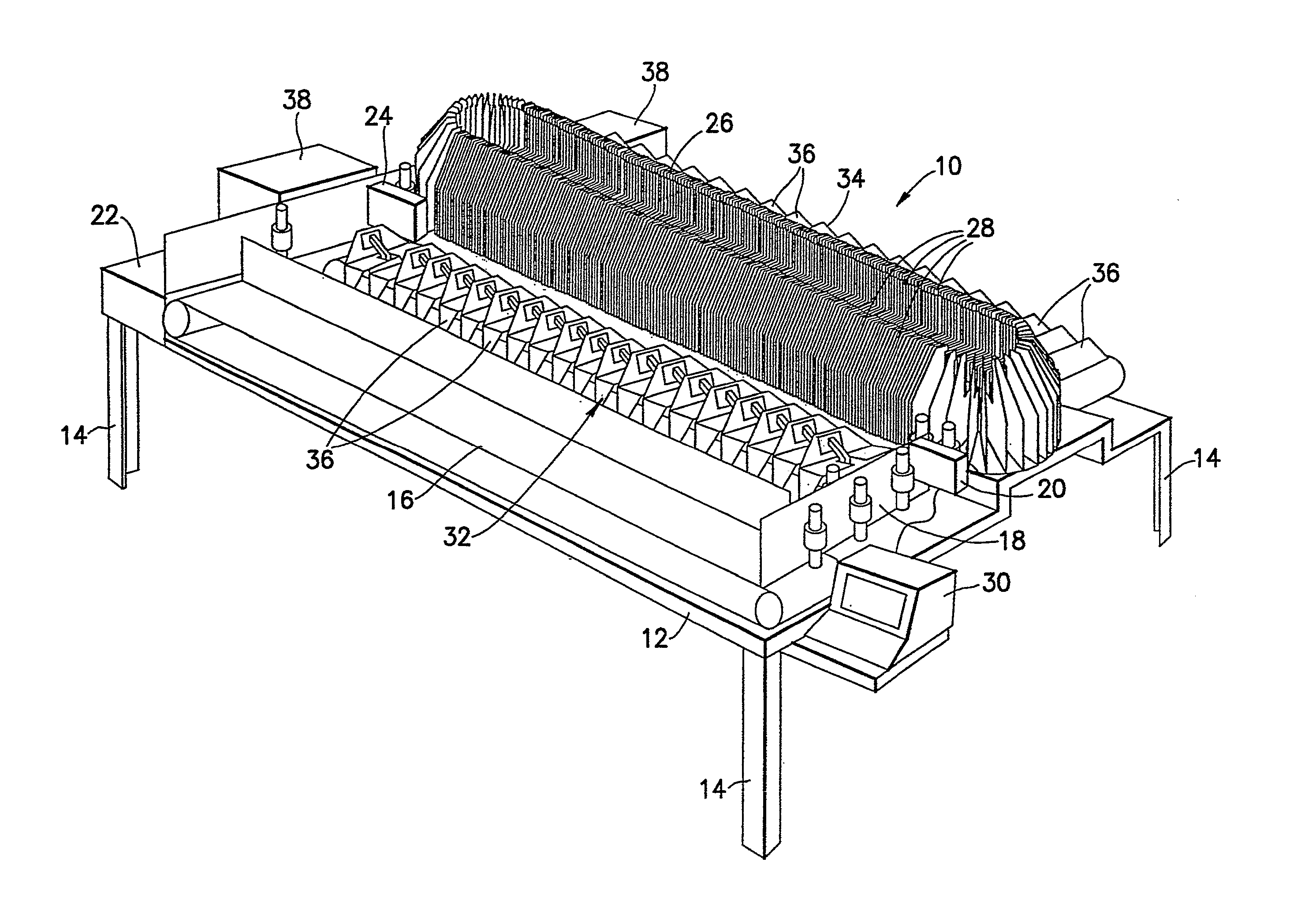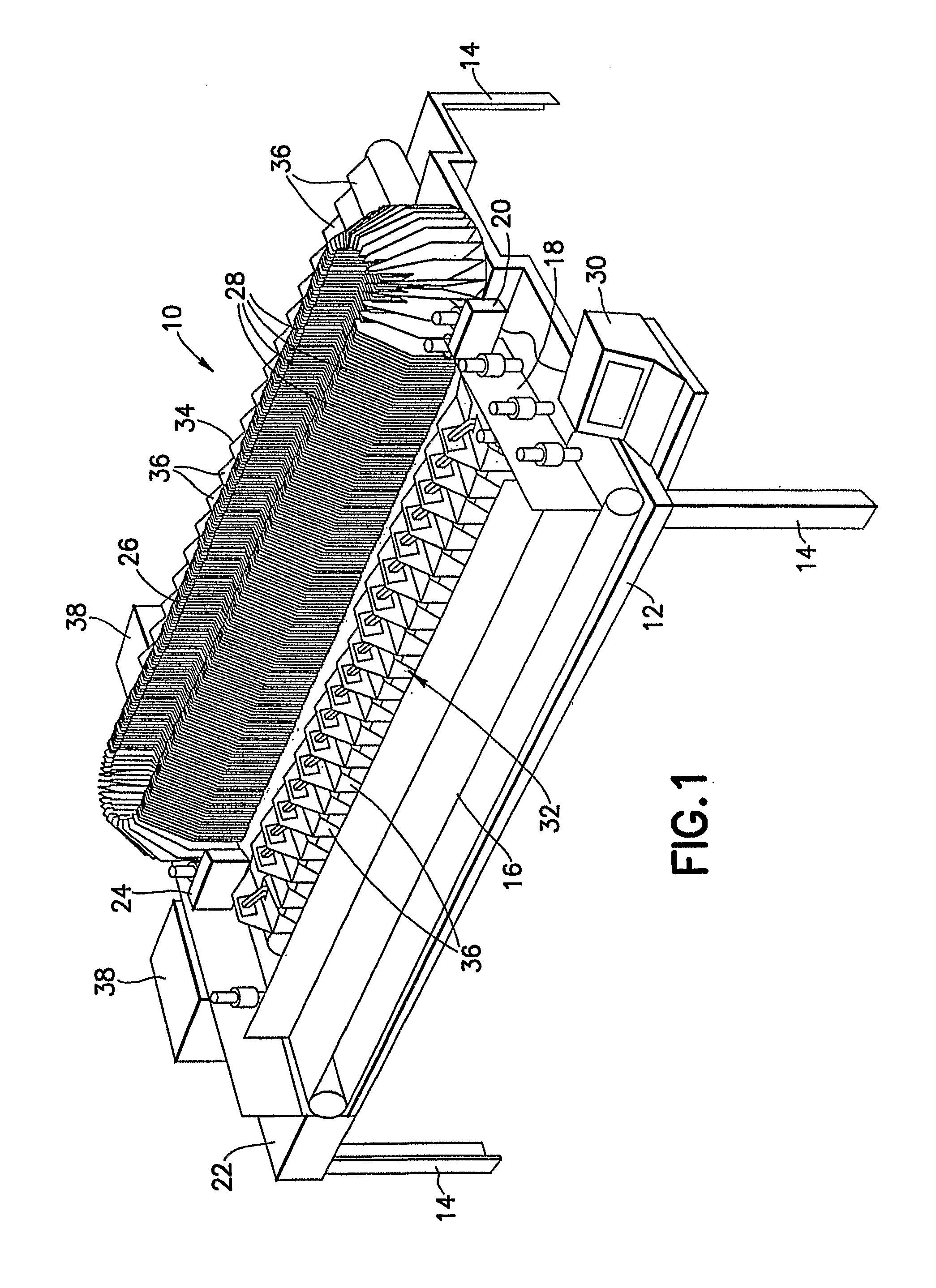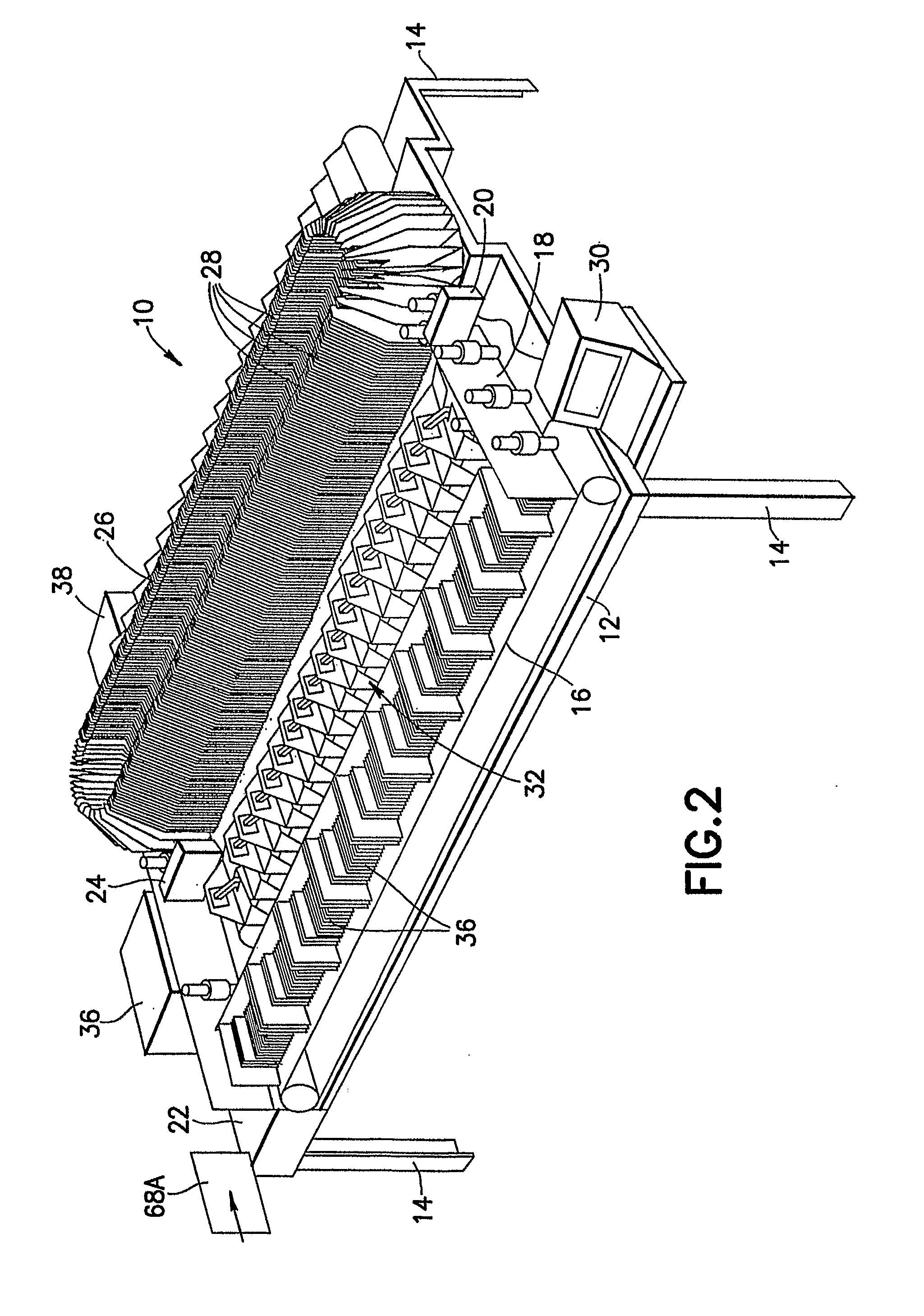Carrier Delivery Sequence System And Process Adapted For Upstream Insertion Of Exceptional Mail Pieces
a delivery sequence and carrier technology, applied in the direction of electric controllers, automatic control, instruments, etc., can solve the problems of high investment requirements and prohibitive size of available mail sorting equipment, and achieve the effects of improving the efficiency of last mile, and reducing the cost of investmen
- Summary
- Abstract
- Description
- Claims
- Application Information
AI Technical Summary
Benefits of technology
Problems solved by technology
Method used
Image
Examples
Embodiment Construction
[0038] Turning first to FIG. 1 of the drawings, therein illustrated is a single pass carrier delivery sequence sorter generally indicated by the numeral 10 and made in accordance with the instant invention. The single pass carrier delivery sequence sorter 10 has a base 12 with four legs 14 (only three shown in FIG. 1) extending therefrom. An auto feed station 16 extends lengthwise along the base 12 and has a feeder 18 and an address reader 20 at one end and a manual feed station 22 with a second address reader 24 at the other end. The feeder 18 and address reader 20 create a feed, read and insert path to a racetrack sorting device 26 which has an array of bin dividers 28, adjacent ones of which create holders for individual mail pieces deposited therebetween. A video encoder / numerical controller 30 which may be a microprocessor or the like is located adjacent the feeder 18 and operationally connected to various components of the single pass carrier delivery sequence sorter 10 for co...
PUM
 Login to View More
Login to View More Abstract
Description
Claims
Application Information
 Login to View More
Login to View More - R&D
- Intellectual Property
- Life Sciences
- Materials
- Tech Scout
- Unparalleled Data Quality
- Higher Quality Content
- 60% Fewer Hallucinations
Browse by: Latest US Patents, China's latest patents, Technical Efficacy Thesaurus, Application Domain, Technology Topic, Popular Technical Reports.
© 2025 PatSnap. All rights reserved.Legal|Privacy policy|Modern Slavery Act Transparency Statement|Sitemap|About US| Contact US: help@patsnap.com



